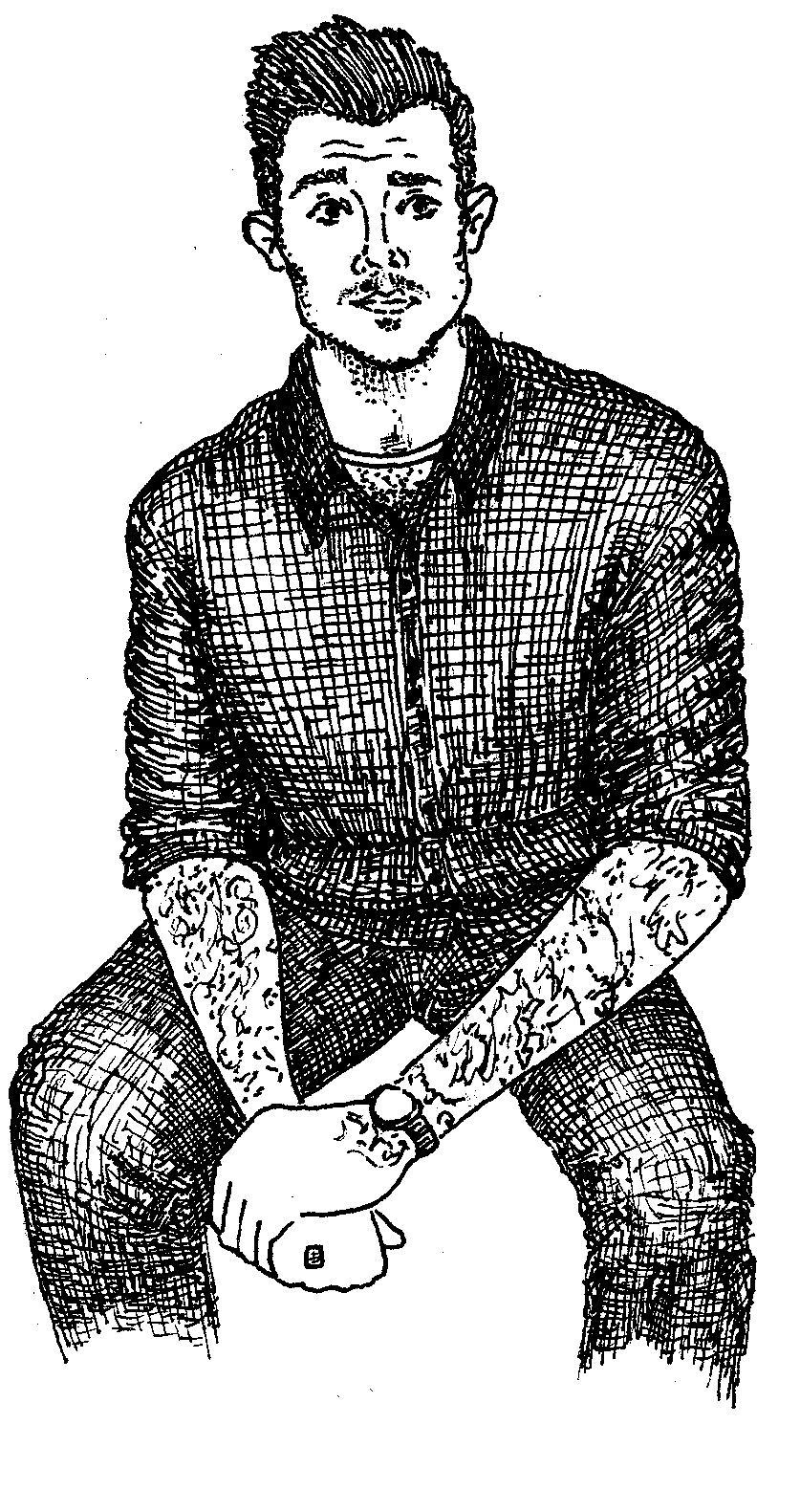
The white walls and stark layout of “Resisterectomy” at the Gray Center have an almost clinical feel. Patrons move from one display to another in reverent silence, and there is a sense of eerie calm. Transparent mastectomy reports hang from the ceiling, with medical jargon studded through the blocks of diagnostic statements. To the left, an ethereal recording of a man and a woman in hospital gowns flickers on a television screen wrapped in fabric. Around the room are transcripts of emails and blog posts, mounted on paper-thin decals or screens. The central focus of the exhibit, however, is an eight-minute video playing on loop in the far left corner, split-screened between a man and a women, the two artists, identically clad in black T-shirts and talking against a white background.
This is Chase Joynt and Mary Bryson’s “Resisterectomy,” a four-part multimedia installation that, in Joynt’s own words, “juxtaposes the narrative of trans sex-reassignment surgeries with the narrative of cancer surgeries—mastectomy and hysterectomy.” The show’s themes of resistance and sisterhood are combined to form the exhibition title.
Though the questions about the gendered body that “Resisterectomy” seeks to address are complex, the elements of the exhibit are simple—portraits, a short film, medical reports, blog posts, and email exchanges. Bryson and Joynt both recreate two famous black-and-white nude photos: a portrait from “Body Alchemy” by Loren Cameron, where a muscular trans man flexes with stoic strength, and Deena Metzger’s “Tree Poster,” where a joyous woman with one breast removed stretches out her arms to show off the vine tattoo on the flat side of her chest. Between the still photos of Bryson and Joynt runs a video loop of the two posing. As they try to hold still they eventually fall out of their respective poses, showing their inability to fit the one-dimensional mold of “trans man” or “cancer survivor.”
When most people seek to portray an experience, their first thought isn’t to find someone who is as different from them as possible, but that’s exactly what Joynt decided to do. He wanted to reframe his experiences by contrasting them with “a stereotypical suburban cis woman’s story,” a narrative which he now knows “doesn’t even exist.”
Through friends of friends he found and reached out to Mary Bryson, a professor at the University of British Columbia whom he believed would fit this role. Bryson responded with questions as to why Joynt was looking for a woman, and said she wasn’t sure if she fit the mold. “In this one e-mail, the assumptions I was making about what this project could be, who I was, and whom I thought I needed have been revealed to me,” explained Joynt. “I realized that in seeking ‘an opposite’ to what I assumed to be my particular experiences, I was making an assumption that there was a location (or an identity) that was inherently ‘not me.’ ”
Bryson and Joynt’s work complicate this simple, relational binary. In the video, the two look extremely similar, identically clad against identical backgrounds with the two stories playing side by side. These similarities allow their stories to play out free of the, “self vs. other” kind of thinking Joynt initially conceived.
The exhibition was first installed in the Feminist Art Gallery in Toronto, where it was in more experimental stages. As Joynt observed viewers’ responses to his work, he made modifications to the exhibition, adding elements like the pathology posters and mounting the images on acrylic rather than paper.
Due to its union of very different domains—cancer, trans politics, and visual arts—“Resisterecomy” has attracted an extremely varied audience since its inception. “One of the most motivating components of the installation has been the breadth and variety of attendees. Young queer people are sharing space with public intellectuals, cancer survivors, PFLAG parents, and strangers off the street. And even as I say that, I know that all gallery-goers are often hybrid combinations of all or none of those things,” reflects Joynt.
Though the show has all the parts Joynt set out to create—video, text, photo, and installation—it isn’t done. Nor, most likely, will it ever be. As “Resisterectomy” moves to each new location it is installed in, it changes and grows. “It started as, and still remains, a series of questions about the management of gendered bodies as they relate to specific medical procedures and spaces. The answers to those questions, and as a result, the artistic forms that those answer take, continue to morph,” says Joynt.
As each question about the gendered body is answered, ten new ones take its place. As “Resisterectomy” continues to exist, it will continue to grow.
Gray Center for Arts and Inquiry, Midway Studios, 929 E. 60th St. Through December 8. By appointment only. Free. (773)834-1936. graycenter.uchicago.edu
